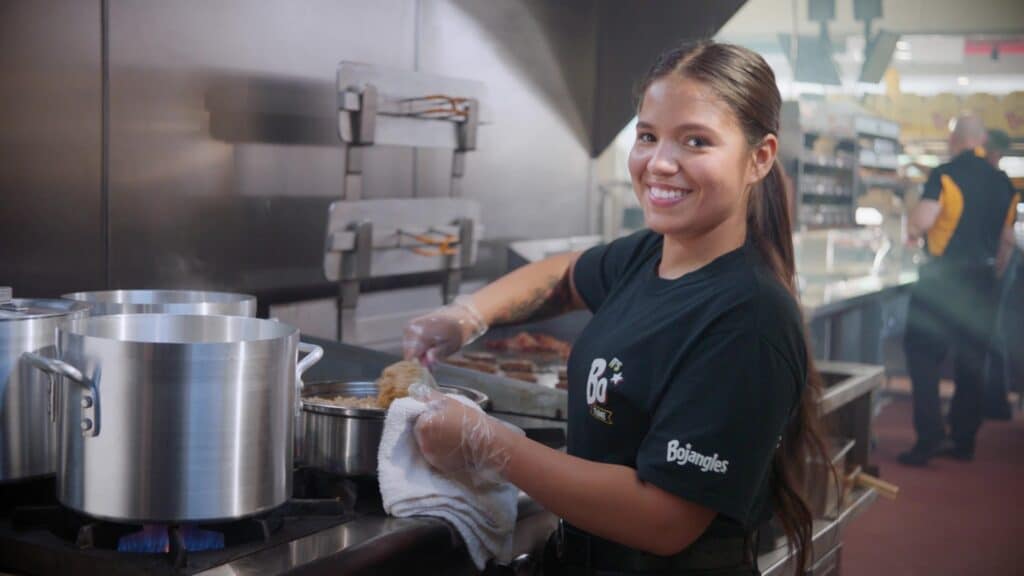What Is Menu Engineering
Menu engineering is the study of both the profitability and popularity of menu items and their influence on menu item placement and design.
In short, menu engineering utilizes a mix of data analytics and art to increase profits per guest. The general process starts with taking a look at food costs, leads to categorizing dishes, and then uses that data to influence menu design.
Menu Engineering was originally brought to the attention of restaurants in the early 1980’s by Professor “Coach” Donald Smith of Michigan State University. Donald Smith created the matrix technique for categorizing the profitability of dishes, which will be discussed more later.
People traditionally think of menu engineering in terms of paper menus but as more and more technology gets introduced in the restaurant space it is very important to think about the overall experience, from the paper menu, to the online menu, to what your servers promote and push, to leaderboard style menus, and beyond. Menu engineering is an iterative process and one that should be conducted at least twice a
year to have the biggest impact.
The Fundamentals Of Recipe Costing
Before you start to think about dish categorization or menu design, you need to first understand how to calculate your food costs. Calculating food costs can seem complicated at first, but if you take the time to understand each value one by one, the process gets easier.
Some restaurants prefer to analyze menu items in excel spreadsheets. If you choose to go that route, this site has a nice template that can help. For those of you who are more technologically advanced and don’t want to spend hours manually inputting data into excel and writing formulas to find these values, there are many technologies available on the market that can automate this process for you.
How to calculate food costs
Price = Sales / Quantity
Price is the average menu price for the item over the time period reported. This is calculated as total sales (from POS) divided by the quantity sold for the time period reported.
Menu Item Costs = Cost of Each Ingredient + Cost of Purchase
Menu item costs can be difficult and time-consuming to calculate since you will be dealing with a variety of different ingredients and portioning. This value is the pillar of menu engineering and it is crucial that you understand it well before executing any strategy on recipe or menu design.
The cost of purchase includes the price you paid as well as delivery fees, interest, and other charges related to purchasing. This value does NOT include labor costs.
For example, A loaf of bread costs $1.50 + 50 cents for delivery. You paid a total of $2.00 for the loaf of bread. It has 12 slices which can make 6 sandwiches. Each slice would cost 16 cents. Each sandwich uses 33 cents worth of bread. Overall it might use 33 cents worth of bread, 70 cents worth of turkey, 5 cents worth of mayo, 25 cents worth of tomato, 10 cents worth of cheese bringing the total cost of that item to $1.43.
Gross Profit Per Item = Price – Menu Item Cost
Gross Profit (Per Item) is the difference between the selling price and theoretical cost Price – Cost) for an item. Using the same example as above if the turkey sandwich costs $1.43 to produce and
you sell it for $8.00 your gross profit for that item would be $6.57.
Quantity = Sum of each menu item sold
Quantity (Qty) is the number of each menu item sold; this number comes from the imported POS data.
Qty % = The percentage of the total number of items sold.
This is only a percentage of those items included on the report. For example, if you are reporting only on food items for a particular restaurant, a quantity percentage of 14.7% only indicates that this item comprises that percentage of your food item sales, not total sales which would include non-food items.
Total Sales = Sum in $ of all sales for each menu item within a set time period
Total Sales shows the total amount sold in dollars for the date range selected. This includes the sum of all time periods from the sales mix data.
Sales % = Total Sales Per Item / Total Sales For All Items
Sales % is the percentage of the total dollars sold. This is only a percentage of those
items included on the report.
Food Cost Percentage = Menu Item Cost / Price
Calculating food cost percentages requires you to know exactly what you are paying for when you are ordering food. In order for this metric to be accurate, you need to have a streamlined inventory process. (You can learn more about how to streamline inventory here) and you need to understand how much of each ingredient you are using to produce a serving of each of your dishes. This is a great benchmark value that you should be tracking on a monthly or quarterly basis. This value will help you identify trends in your menu engineering.
Theoretical Cost of Goods Sold = (Item A Food Cost x Units of A sold) + (Item B Food Cost x Units of B sold) + (and so on)
Cost of goods sold tells you how much it costs to create each of your menu items. COGS represents your inventory within a set time period. In order to calculate this value, you need to record inventory at the beginning and end of the period you are looking to measure.
Theoretical Food Cost (as a percentage) = Theoretical Cost of Goods Sold / Food Sales
Contribution Margin = Menu Item Sales – Food Costs (within a certain time period)
This value helps you measure profit and shows you how your sales affect your net income. This will be the net number of dollars that you take to the bank. CM $ (Contribution Margin) High or Low, indicating whether the gross profit per sale of the item is above (High) or below (Low) the average gross profit per sale of the report items. This is an indication of profitability.
MM % (Menu Mix)
High or Low, indicating whether the menu item achieves 70% or more of an average number of sales for the listed group (High) or less than 70% of the average (Low). This is an indication of popularity.
Gross Profit $ (Total) The total gross profit for the item over a specified time period.
Calculated as Gross Profit (per item) x Qty.
Category Classifies each item as Star, Plow Horse, Puzzle, or Dog, depending on the combination of Contribution Margin and Menu Mix attributes of the item. We will cover categories more in the next section.
Recipe Analysis and Categorization
Now that you know how to calculate all of the food costs necessary to complete your analysis you should be able to start to categorize your dishes. Software can do this for you automatically, but if you are tracking with excel manually, this is how that process would work.
Create a scatter graph with your menu items’ contribution margin and item popularity (qty sold) using the data from a certain time period. It could be the past month or the past quarter. It doesn’t matter which, all that matters is that you use the same time period for everything while you complete this process.
After creating a graph, draw a trend line through your items to determine which quadrant your item falls under.
Stars = High Profitability + High Popularity
Your stars are just what they sound like; your best dishes. They lead in both profitability and popularity.
Your menu design should highlight your stars. You should keep these dishes consistent and promote them in any way you can. When it comes to layout, you want to place your stars near the top of your menu and emphasize them. You can do that by adding color, or a box around them, adding a callout like “*customer favorite” or “*most popular” can also help. You want to be sure that you keep your stars in a position where they can continue to shine.
Puzzles = High Profitability + Low Popularity
Your puzzles are dishes that have a decent profit margin but are not selling as much as they should be. If you are certain that the customers that order this item are pleased with it, then you may want to think of ways you can better highlight your puzzles. Change up the way you plate it or present it, and/or consider creating a couple of specials around it to see if you can get more guests to try it. Sometimes lowering the price of these dishes even just a little can help it sell better.
Dogs = Low Profitability + Low Popularity
Your dogs are dishes that are not profitable or popular. In most cases, your dogs are the dishes that you should re-work or eliminate. However, there are some items you just can’t eliminate, such as the kid’s menu or special diet items. Since these are low profit, and the people who need them will find them anyway, try to de-emphasize these on your menu, or even place them on a standalone menu available upon request.
Plowhorses = Low Profitability + High Popularity
Your plowhorses are dishes that customers enjoy and order frequently but when you breakdown the costs, they are actually costing you more money than they are making you. When it comes to plowhorses, you have a few different solutions:
- One would be to work to source cheaper ingredients or make swap outs where
you can to bring down the cost of producing these dishes. - An alternative would be to raise the price; however, be careful when playing with
prices. These dishes could be getting ordered because they are low in price. If that is
the case, you don’t want to kill sales by immediately raising prices. - Another thing you can watch for is portion size. Could you serve smaller portions
of this dish for the same price? Watch customers for a few days and see if there is
a lot of this dish getting leftover on plates. If so, cut the portion size. - Make sure your kitchen is being consistent about portion sizes. Get them
appropriate measuring utensils for portioning and supervise them to make sure
they are using them.
All of those tweaks can help you turn your plowhorses into stars.



